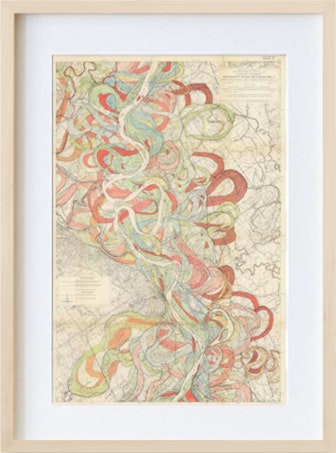
Among the Moss Piglets: The First Image of a Tardigrade (1773)
The tardigrade’s tiny size belies both its astounding physical resilience and its charisma. Also known as water bears or moss piglets, they can survive extreme temperatures and pressures, withstand radiation levels that would kill most organisms, and reanimate after long periods of desiccation or oxygen deprivation. They can even handle being in outer space without too much trouble — impressive for creatures that are roughly the size of a grain of sand. As a result, the 1300 known species of tardigrades are found everywhere on Earth: from the deep seas, to rainforests, to Antarctica.
The first recorded observations of these remarkable microfauna were published in 1773 by the German pastor Johann August Ephraim Goeze. Because they looked like tiny bears to his eyes, he called these strange creatures kleiner Wasserbär, “little water bears” (the name “tardigrade” came later in 1777, when an Italian biologist highlighted their slow movements). Goeze’s observations and drawings covered just a few pages, appended to his German translation of Charles Bonnet’s Traite d’insectologie, but they communicated the same wonder and fascination for tardigrades that many still feel today.
Goeze was a theologian and philosopher by training, born in the town of Aschersleben in the Anhalt state of what is now Germany. As a pastor, he only began looking at the minuscule world at the age of forty-one, after attending an enthralling microscope demonstration. Goeze immediately purchased several books on the subject and acquired his very own compound microscope in order to study microfauna himself.
The possibility of peering into a world invisible to the naked eye was a relatively recent phenomenon at the time. Microscopes had been used from the sixteenth century, but it was not until the 1660s that microscopy became a somewhat common scientific method. This was the decade when Dutch natural philosopher Antonie van Leeuwenhoek created a microscope that magnified objects up to two hundred times — visualising sperm cells, plant cells, and the structure of minerals — and Robert Hooke of the Royal Society published Micrographia, illustrating his observations of fleas, cork, and other microscopic structures in exquisite detail. Early microscopes were plagued by technical issues, including impurities in the glass, spherical aberration (image blurring), and chromatic aberration (colour separation) — only solved two centuries later. Nevertheless, for the tiny water creatures that Goeze was observing, they were quite sufficient to make startling new discoveries.
 Scroll through the whole page to download all images before printing.
Scroll through the whole page to download all images before printing.After collecting his samples from some stagnant water in December 1722, Goeze observed the “animacules” he found among duckweed. He noted the tardigrades’ grayish, opaque skin and frog-like heads, their eight little feet with three crooked, sharp claws, which were apparently in a constant state of trying to grab something. He even found a piece of molted skin that seemed to be filled with miniature tardigrades writhing around inside eggs — an observation that he cross-checked with a number of friends in case his eyes deceived him. Goeze suspected these creatures might be quite rare, given that nobody else had ever mentioned them before.
In keeping with the name “water bears”, Goeze commented that “they are [predators] in relation to other worms in their environment, just as certain as the tigers and lions of the African deserts” and that the “voracity of some species of these little creatures is as large as it proportionally may be in bears and hyenas”. He pointed out that the microscope allowed one to visit an alien realm and see predators hunt, having the great benefit of avoiding any risk or expenditure. There was certainly safety in the minuteness of the beasts, and Goeze commented that he couldn’t imagine anything more horrible than the water bear being the size of an actual bear.
This apparent ferocity aside, the tardigrades seemed a little inept. They would mostly lie on their backs, waving their arms slowly. Goeze wasn’t quite sure how they managed to do anything except cling to duckweed, despite their many sharp claws. He tried to flip one right side up and gave another more water to see if it could swim, but in vain. One tardigrade snagged another microscopic creature with its foot by mistake. When it got free, the escapee swam away slowly and died — its apparent suffering convinced Goeze that even the smallest creatures could feel pain.
The pastor’s investigations helped him to appreciate the glory of divine creation, which he summed up near the end of his observations: “Creator of elephants and atoms, of whales and the living water dots! I am amazed by the infinite diversity of designs your wisdom used to shape every body of the animal, the bird, the fish, the insect, and the worm in a different way!” The single, carefully executed drawing of a tardigrade in Goeze’s observations communicates the mystery of these minuscule beasts, which has fascinated researchers ever since.
Sep 10, 2024







